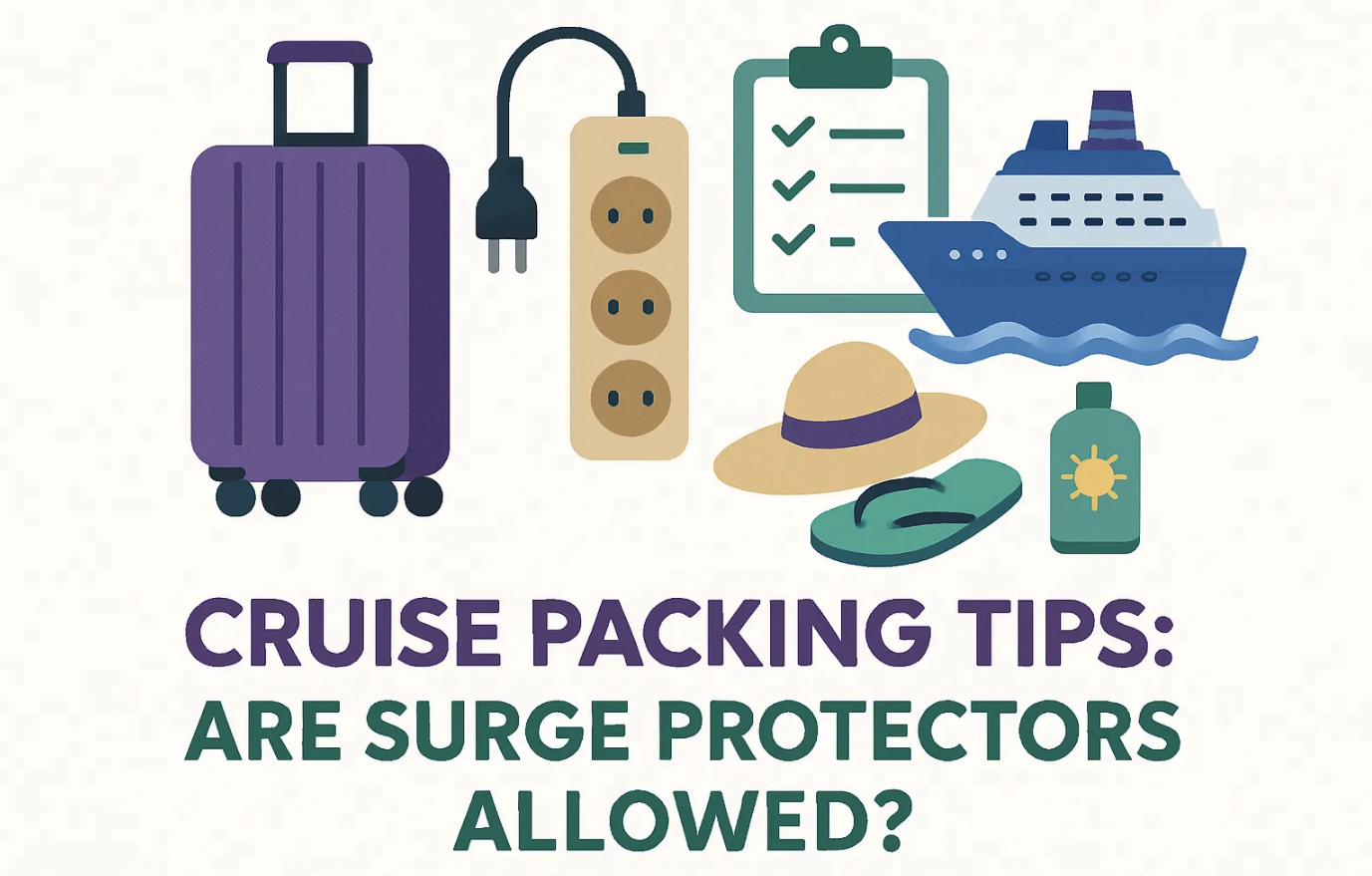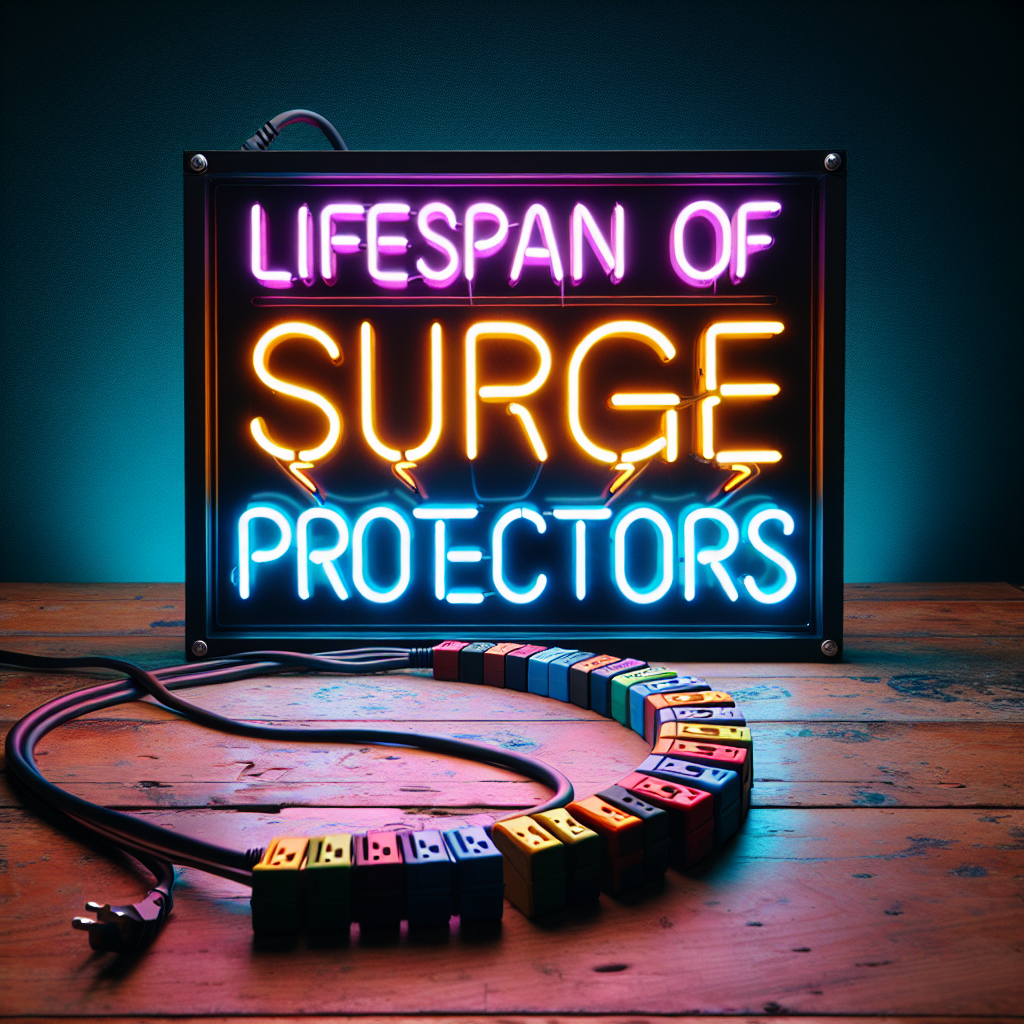
When planning a cruise vacation, it’s important to be aware of what you can and cannot bring on board to ensure a smooth and safe journey. One item commonly questioned is the surge protector, and for good reason. Due to significant fire safety risks and differences in cruise ship electrical systems, surge protectors are typically prohibited.
In this article, let’s find out why this is the case and explore some safe and approved alternatives to keep your devices powered throughout your voyage.
Why Can’t You Bring a Surge Protector on a Cruise?
Fire Safety Risks
Surge protectors pose significant fire hazards on a cruise ship. These devices can overheat when exposed to prolonged electrical surges, especially in confined environments.
A marine investigation revealed that fires on a U.S.-flagged container ship were caused by surge protective devices (SPDs) plugged into a lighting circuit. A ground fault on another circuit, connected to the same panel, led to overheating and a fire. Even when SPDs trip as designed, one power conductor may remain active, creating a risk of short circuits and fires.
Cruise ships prioritize safety for all passengers. The risk of electrical overload or faulty surge protectors igniting surrounding materials makes these devices unsuitable for onboard use. This is why cruise lines enforce strict policies to prevent such hazards.
Electrical System Differences on a Cruise Ship
The electrical systems on a cruise ship differ significantly from those in homes. Ships operate on unique power grids designed to handle specific loads. Surge protectors can disrupt this balance, leading to voltage imbalances or ground faults. These issues increase the likelihood of overheating and fire.
Also, cruise ships rely on compact and efficient electrical setups to conserve energy and space. Surge protectors, which absorb energy through Metal Oxide Varistors (MOVs), can complicate these systems. If an MOV overheats, it can ignite, posing a severe threat to the ship’s safety.
Cruise Line Policies on Surge Protectors
Cruise lines have clear policies regarding surge protectors. Carnival Cruise Line allows non-surge-protected power strips but bans surge protectors for safety reasons.
Royal Caribbean has implemented a stricter power strip ban, prohibiting both surge-protected and non-surge-protected devices.
Norwegian Cruise Line’s policies are less explicit but generally align with safety-focused restrictions.
|
Cruise Line |
Surge Protectors Policy |
|---|---|
|
Carnival |
Allows non-surge-protected power strips |
|
Royal Caribbean |
Banned multi-plug outlets and power strips altogether |
|
Norwegian |
Policies not explicitly detailed, mentioned in context |
To avoid issues during boarding, always check your cruise line’s specific rules and regulations. Opt for cruise-compliant alternatives, such as USB hubs or approved power strips, on cruise ships.
What Happens If You Bring a Surge Protector on a Cruise?
Confiscation During Security Checks
When you bring a surge protector to a cruise ship, security personnel will likely confiscate it during the boarding process. Cruise lines enforce strict screening procedures to identify items that are not allowed onboard. Surge protectors often appear on the prohibited list due to their potential to cause electrical overloads and fire hazards.
Security teams use scanners and manual inspections to detect such devices in your luggage. If they find one, they will remove it and hold it until the end of your trip. This can delay your boarding process and create unnecessary stress.
Potential Consequences for Passengers
Bringing a surge protector on a cruise can lead to several consequences. These devices are considered fire hazards because they can overheat and release smoke, which can potentially ignite nearby materials.
The unique electrical systems on a cruise ship amplify these risks. If a surge protector disrupts the ship’s power grid, it could cause voltage imbalances or even equipment failures. Passengers who attempt to bring prohibited items may face additional scrutiny from security.
In some cases, repeated violations of cruise line policies could result in penalties, such as restricted access to certain areas or services. To avoid these issues, it’s best to leave surge protectors at home and opt for approved alternatives.
How to Avoid Packing Prohibited Items
You can avoid packing prohibited items by carefully reviewing your cruise line’s policies before your trip. Many cruise lines provide detailed lists of restricted items, including surge protectors.
Stick to cruise-approved power solutions, such as USB hubs or non-surge-protected power strips.
Here are some additional tips to streamline your packing process:
-
Skip bulky beach towels; cruise ships provide them.
-
Avoid overpacking clothes; onboard laundry facilities are available.
-
Leave large bottles of toiletries at home; cabins include basic amenities.
-
Pack only essential footwear, such as comfortable walking shoes and one dressy pair.
-
Avoid bringing valuables or expensive jewelry to reduce the risk of loss or theft.
By following these strategies, you can ensure a smooth boarding experience and avoid unnecessary complications.
Cruise-Approved Alternatives to Surge Protectors
USB Charging Hubs
USB charging hubs are a practical solution for keeping your devices powered on a cruise ship. These hubs allow you to charge multiple devices simultaneously, making them ideal for families or tech-savvy travelers. Look for compact designs that fit easily into your luggage.
Many USB hubs also include built-in safety features to prevent overcharging or overheating, ensuring your devices stay protected.
For example, a 10-port USB Charging Hub can charge up to 10 devices simultaneously, offering a maximum output of 50W. This makes it perfect for cruise travel, where outlets are often limited and multiple devices need to be charged.
Cruise Approved Power Strips
A cruise-approved power strip is a must-have for your trip. Unlike surge-protected power strips, these are designed to work with the unique electrical systems on a cruise ship. They provide additional outlets without the risk of overheating or causing electrical issues.
Some models even include USB ports, giving you more flexibility for charging. Always check your cruise line’s policies before you bring a power strip to ensure it meets their requirements.
Carnival, for instance, allows non-surge-protected power strips, while Royal Caribbean has stricter rules.
Multi-Port Wall Chargers
Multi-port wall chargers are another excellent alternative. These devices plug directly into an outlet and offer multiple USB ports for charging. Their compact size makes them easy to pack, and they eliminate the need for bulky power strips.
Many models feature smart charging technology, which automatically adjusts the power output to match your device’s specific needs. This ensures efficient and safe charging for phones, tablets, and other gadgets.
Portable Battery Packs
Portable battery packs provide a convenient way to charge your devices without relying on cabin outlets. These packs store energy, allowing you to charge your phone or tablet on the go. They are especially useful during shore excursions or when outlets are unavailable.
Look for high-capacity models that can charge multiple devices before needing a recharge. Some battery packs even include fast-charging capabilities, saving you time while keeping your devices ready for use.
Tips for Using a Power Strip on a Cruise
Maximize Limited Cabin Outlets
Cruise cabins often have limited electrical outlets, making it a challenge to charge multiple devices. You can maximize the available outlets by using a surge-free power strip. These strips typically offer three standard outlets and two USB ports, allowing you to charge several devices simultaneously.
If your devices primarily charge via USB, consider a USB power hub with multiple ports, including USB-C options, for efficient charging.
European outlets are another resource in many cruise cabins. Bringing a simple European outlet adapter lets you access these additional power sources. Ensure your devices are compatible with 220VAC to avoid damage. This minor adjustment can significantly expand your charging options during your trip.
Choose Cruise-Friendly Charging Solutions
Not all power strips are suitable for cruise ships. A power strip with extension cords or surge protection is prohibited due to safety concerns. Instead, opt for cruise-friendly alternatives like USB multi-plug charging stations or non-surge-protected power cubes with USB ports. These compact devices provide multiple charging options without violating cruise line policies.
Portable power banks are another excellent choice. They allow you to charge devices on the go, especially during shore excursions.
For added convenience, you can even use a fully charged laptop to power smaller devices multiple times. These solutions ensure you stay connected without relying solely on cabin outlets.
Check Your Cruise Line’s Electrical Device Policy
Each cruise line has specific rules regarding the use of electrical devices. Reviewing your cruise line policy before packing can save you from unnecessary hassles. Limit the number of devices you bring to those you’ll actively use. Charging devices during downtime, such as while dining or enjoying activities, helps you make the most of the limited outlets available.
Collaborating with fellow passengers can also be helpful. Sharing charging responsibilities or strategies ensures everyone has access to power when needed. Staying informed and prepared ensures a smooth and stress-free experience when using a power strip on a cruise.
Surge protectors aren’t allowed on most cruises due to fire risks and electrical system issues. Instead, pack cruise-approved options like USB hubs or non-surge power strips. These alternatives keep your devices charged safely.
Always check your cruise line’s policies before packing. Staying informed ensures a hassle-free boarding experience and a stress-free trip.
FAQ
Can you bring a power strip with an extension cord on a cruise?
No, cruise lines prohibit the use of power strips with extension cords. These cords pose tripping hazards and increase fire risks in confined cabin spaces.
Are there any exceptions to the surge protector ban?
No exceptions exist for surge protectors. Cruise lines enforce strict safety policies to prevent electrical overloads and fire hazards onboard.
What should you do if your device requires surge protection?
Use a portable battery pack or cruise-approved power strip. These options provide safe charging without violating cruise line policies. Always check your device’s compatibility beforehand.




